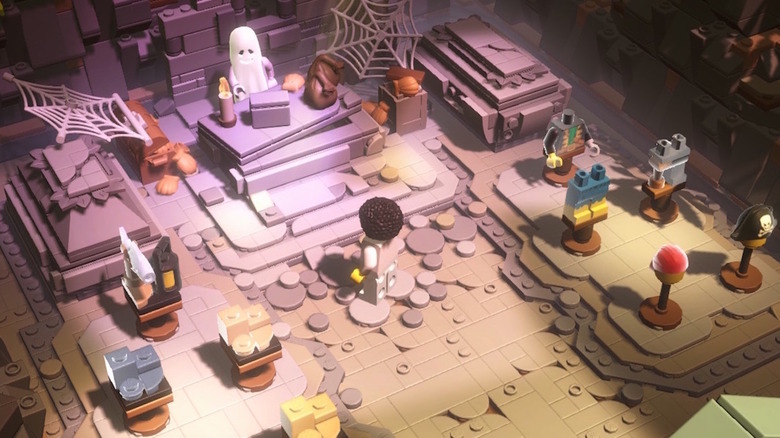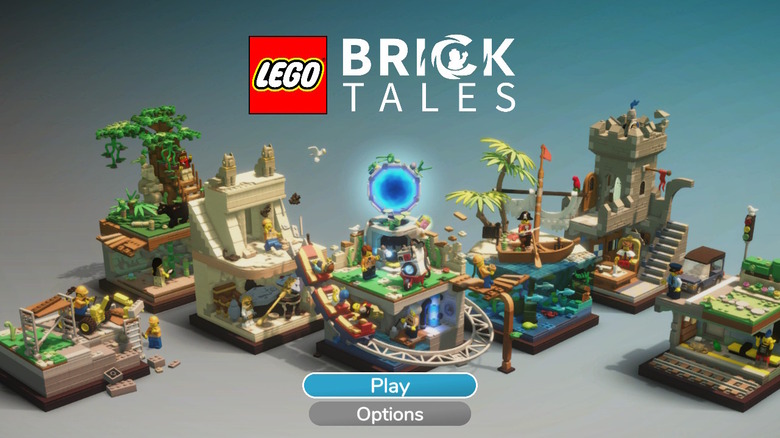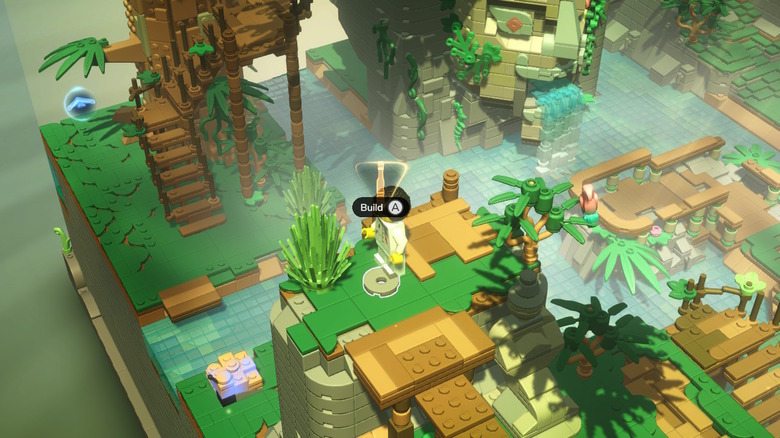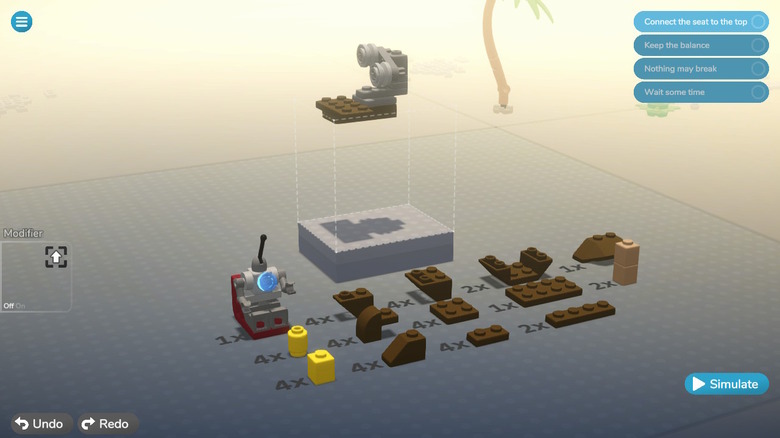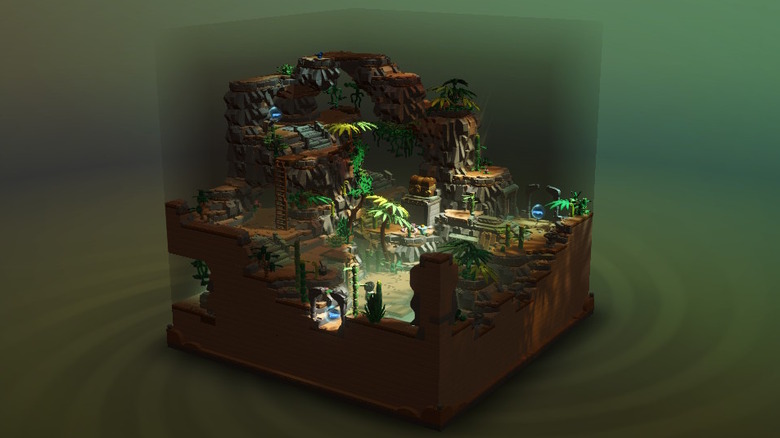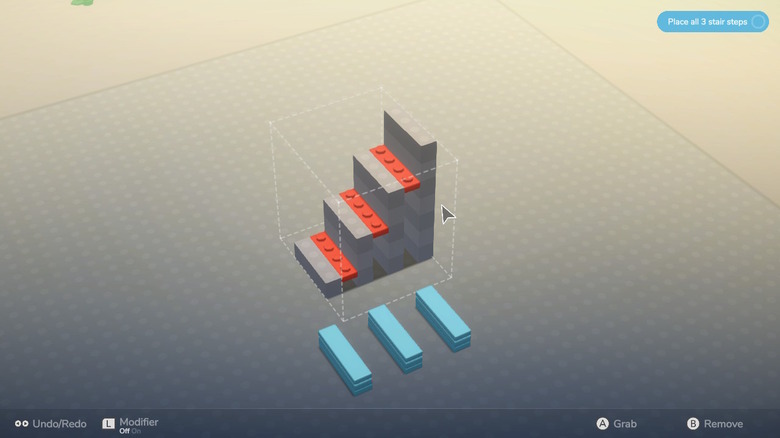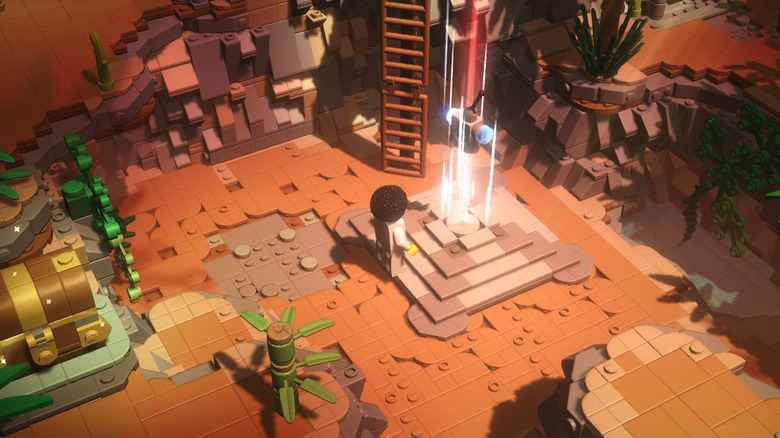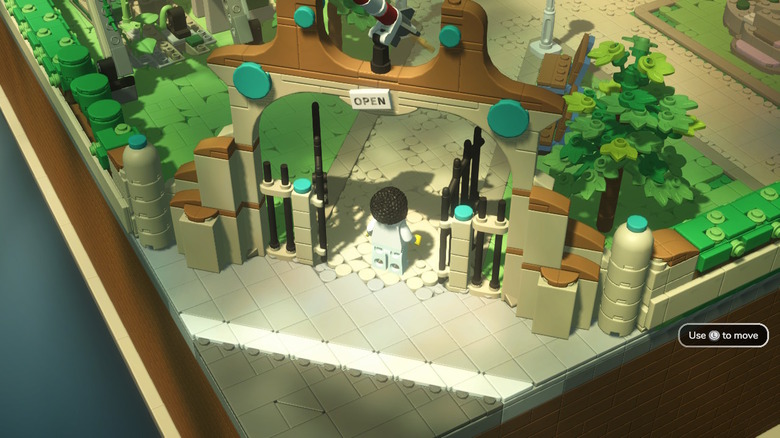LEGO Bricktales Review: Not A Top Favorite, But Good For A Rainy Weekend
- Gorgeous design
- Thought-provoking building tasks
- Original LEGO world
- Fun map to explore
- Ultimate cozy game for LEGO lovers
- Controls are frustrating
- Solel focus on building and dialogue will bore some
- You'll probably lose interest fairly quickly
Most LEGO lovers have fond childhood memories of playing with these colorful plastic bricks. Since The LEGO Group expanded to the digital realm with LEGO video games back in 1997, over 80 games founded on those little plastic building blocks have circulated across multiple gaming platforms. The latest game in the LEGO gaming universe is "LEGO Bricktales."
Much like the physical toy brand's wide world of releases, for the past couple of decades, LEGO games focused on as many pop culture universes as possible. There were some obvious winners, like "Harry Potter" and "Star Wars", and some subjective losers, like "The Incredibles" and "Indiana Jones." Combat and action almost always took priority over puzzle-based elements that mirrored actual, physical LEGO playing. The stories were familiar, of course, to remain in line with the pop culture factions they represented.
The newest of this family, "LEGO Bricktales," is of a different breed. The LEGO Group provided a download code for us to play the game and facilitate this review, and we found out if it was worth the hype.
Bricktales storyline is an entirely reinvented LEGO approach
Enter "LEGO Bricktales," something we and every other LEGO loyalist have been patiently awaiting. It arrived from developers Clockstone and Thunderful on October 11 and follows our hero across a unique story containing five gorgeous and unique LEGO biomes — a jungle, a medieval kingdom, a Caribbean pirate gang hideout, a bustling city, and a desert — to help his grandfather restore a dilapidated amusement park before it is permanently shut down by the powers that be.
The objective in each biome is to gather Happiness Crystals, which in turn power up portions of Grandpa's theme park. After the storyline in each biome is completed, you are awarded one crystal, and teleport back to the amusement park, where the crystal will fire up a new ride. Along the way, we encounter LEGO figures in each environment that ask us for help with Good-Samaritan-type deeds, the completion of which is what progresses the storyline.
In each biome, you must enter a temple to gain a new skill — like hovering and stomping — which come in handy if you play the biomes through again after completion.
Gameplay: The action is like sitting in bumper-to-bumper traffic
Say you're an explorative game player by nature, an RPGer at heart. You want the freedom to roam, pop in and out of phases and active missions, talk to characters, shuffle across environments or universes, and maybe sprinkle in some combat all in your own time. This admittedly is a challenge in Bricktales. For one, combat-focused action is absolutely not a function of this game, but we can really only describe any kinetic element of this game outside of the LEGO building as being stuck on a backed-up highway: You want to go, and you might do so for 30 seconds after finishing a building task, only to come to a halt at yet another task that directly obstructs any further progress without its completion. Exploration and roaming truly only comes in spurts before you're tasked with building another bridge, car, or boat.
Then again, this is a LEGO game, so there's a chance it's the puzzles and assembly you're after. We're just saying that there's a lot of it, more than any other LEGO game we've experienced. The bulk of the puzzle elements in this game are functional assignments, like stairs, cranes, and bridges, where a limited amount of bricks and a clear application of physics principles — not collapsing under the weight, not containing LEGO bricks floating in the air — act as your parameters. When you tell the game that you're finished with a building challenge, a test robot will come to challenge the structural integrity of your creation.
Gameplay: The test robots were cute, at first.
This robot testing system is imperfect and at times frustrating. We had many instances where our test robot made it safely across a bridge or up a staircase, only to collapse, quite dramatically if we might add, to the ground below (indicating failure) only after they've successfully used the structure we built.
By any degree of logic, this would tell the user that your structure is unstable and needs to be rebuilt, but you are not given any direction on what caused the collapse. After multiple rebuilds and multiple sacrificed test robots, we desperately rebuilt the bridge the same exact way and our test subjects made it safely across. Are we to believe that our test robots just contain a flair for the theatrical, then?
We are toeing around spoilers here, but some of the other structures are not based on function or physics — rather, they're creative and whimsical, like a music box or the design aspects of the rollercoasters back at the amusement park. Making it through the challenge is far less frustrating when the life of a test robot isn't at stake.
Once you finish construction, you are also able to activate sandbox mode, which removes brick limits and enables an additional set of new bricks to add personal flair to your structure — although there's really no inclination to do so unless infusing some personal creativity into every single structure is important to you.
Gameplay: The camera and POVs will frustrate you
The cameras and point-of-view (POV) options in this game will annoy you — or at least they will on the Nintendo Switch. We can't speak to PlayStation or PC play. We found the camera and view controls to be the most agitating during building mode; just when you think you've got the right placement for laying a piece, changing your perspective shows that your initial view was distorted and you need to make further adjustments.
This becomes especially annoying when trying to move bricks step-by-step across vertical planes, and you might find yourself going back and forth between eye-level and bird's-eye views of your creation multiple times to land the right placement. Getting tiny pieces into a nook or cranny within your partially-completed structure is going to prove to be impossible, so it's best you plan ahead and build from the inside out.
What's further is that you can't hold a brick while panning around in the building mode. If you are holding a piece and want to switch from a level view to an aerial view, doing so will drop the brick wherever you picked it up from, which makes building incredibly frustrating if you are trying to get into tight or exact areas as you are forced to pick up a brick, try to place it, look for a different angle, repeat.
One of our biggest annoyances with building mode on Bricktales is that there is a modifier for the step-by-step vertical moving of a brick using arrow buttons, but not for horizontal moving. If you want to move a brick across the horizontal plane, you're relying entirely on the joystick — so one wrong touch will vault the brick you've been painstakingly trying to place in a very specific spot across the entire building space unless you are using hairs'-breadth joystick movements.
Gameplay: Struggles in building mode
You are likely to find many of the "faulty" areas of your structure that cause the robots to fumble are questionable. For instance, if you are building a two-part bridge that turns at a 90-degree angle, your tester robot may cross the first segment but suddenly fall flat on his face as the bridge behind him — what he's already crossed — inexplicably collapses. Also, a view of your structure from the bottom-up isn't possible in the game, which would have been helpful in several instances. We found that these particular instances take away from the zen feeling of the game and were frustrating enough to lead us to abandon the game for a few hours.
We also found that zooming out for a diorama-like, bird's eye view of the scene you're in during non-building gameplay is bothersome. This can only be done if character movement and action entirely stop, which is aggravating if you want to ambulate your character to a spot across the map while using the zoomed-out view as your guide. Your LEGO man will only resume his movement after you've zoomed back into the default gameplay angle, so you'll find that a lot of back-and-forths will ensue. You also do not have the power to adjust your view of the map on the gameplay level (it only orients itself automatically but seemingly never when we wanted it to), so if you are on a map full of nooks and crannies —like the jungle and mountain areas — you alternate between studying the bird's eye map and blindly stumbling as you try to navigate through an opaque wall.
Late-game, backtracking, and subsequent play-throughs: Worth it?
You do not get to pick the sequence in which you explore the biomes. For the second-to-last environment, you will find yourself in a city that is full of engineering challenges — an intricate story of rooftop bridges, a car, a crane, and another incredibly difficult puzzle that we will leave unnamed for spoiler purposes. Its landscape isn't as romantic or extravagant as other biomes in the game, but here we found the most engaging and complex (in a real-world way) puzzles and builds from any of the biomes. We definitely spent the longest on this biome.
"LEGO Bricktales" is a very short play-through, if you're focused on objective completion. We blew through the story in just under 14 hours but, as of the publishing of this review, are in the midst of a replay to gather the many collectible items and unended tasks that we left behind. We applaud the developer for finding ways to keep the early maps interesting even after you've completed the storyline; there are areas in the first maps that can't be accessed until you've gained skills from the later ones.
If you take the time to study each biome, you'll find collectible animals and treasure chests. There are caverns, hallways, nooks, and caves hidden from view when you aren't thorough in switching from a bird's eye view to a narrative view and exploring every corner of each map. However, brightly-illuminated blue arrows encourage swift movement through the biomes and story while smaller enrichments to the game go unnoticed if you're not attentive.
Is LEGO Bricktales worth the price?
There was just enough lack of clarity in a few instances to make us fed up with the game and set it to the side for a break. Sometimes this is related to building objectives, but it more often than not was in regard to the overall gameplay.
When you enter a new area of the map within the same biome, the blue arrows — indicating the availability of a new area — will show up almost immediately after you finish your first task, and the storyline with the characters in a particular biome will not make it clear whether you have unfinished business in the current area or if you should move on to the next. Backtracking isn't impossible, but it felt harmful to the first play-through of the storyline. There were also a number of times where the objective felt vague — we're going where? To talk to who? To get what?
Overall, we don't think how much you enjoy "LEGO Bricktales" will depend on how much you've enjoyed LEGO games of the past. If you've never enjoyed the pop culture LEGO games, don't view it as indicative that you won't like this one. But as we've said, if combat or lots of open-world running around is your speed, Bricktales will feel cumbersome.
If you're looking for a challenge that'll keep you engaged, thinking, and even frustrated, Bricktales will do that at points. We don't think you'll spend more than 30 hours or so on this game — two play-throughs at most — before you feel like you've seen all you needed to see. But it maintains just enough wonder and sidebar adventure that you can immerse yourself in a first-of-its-kind, playful, and charming original LEGO world for as long as you'd like.
"LEGO Bricktales" can be purchased now for PlayStation, PC, and Nintendo Switch. The version we've reviewed here was made for Nintendo Switch and can be purchased for approximately $30.
